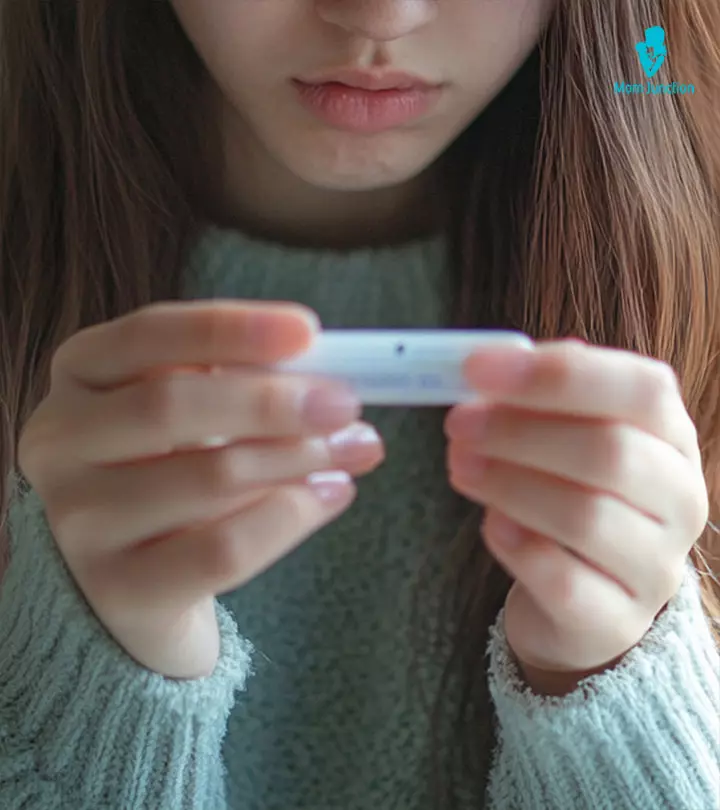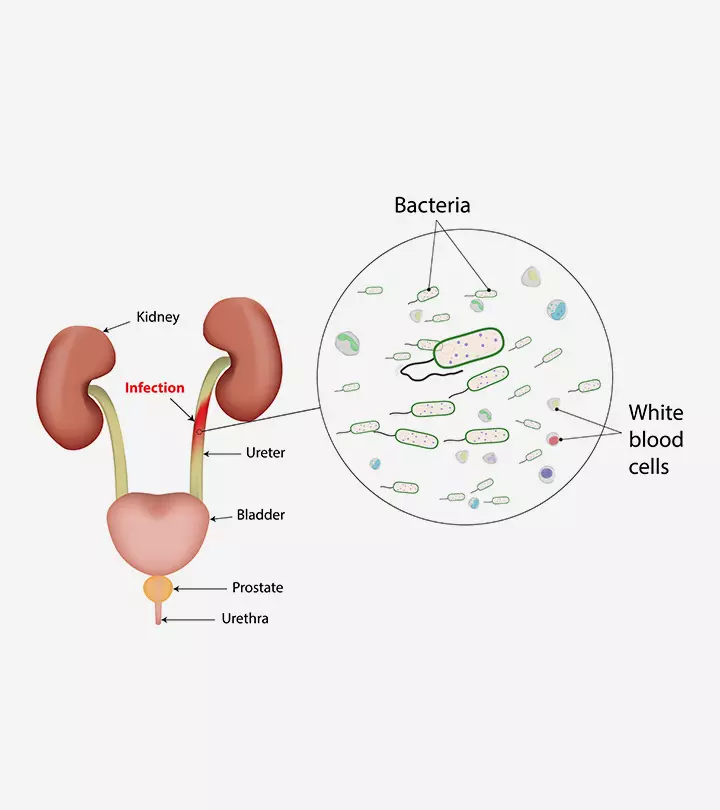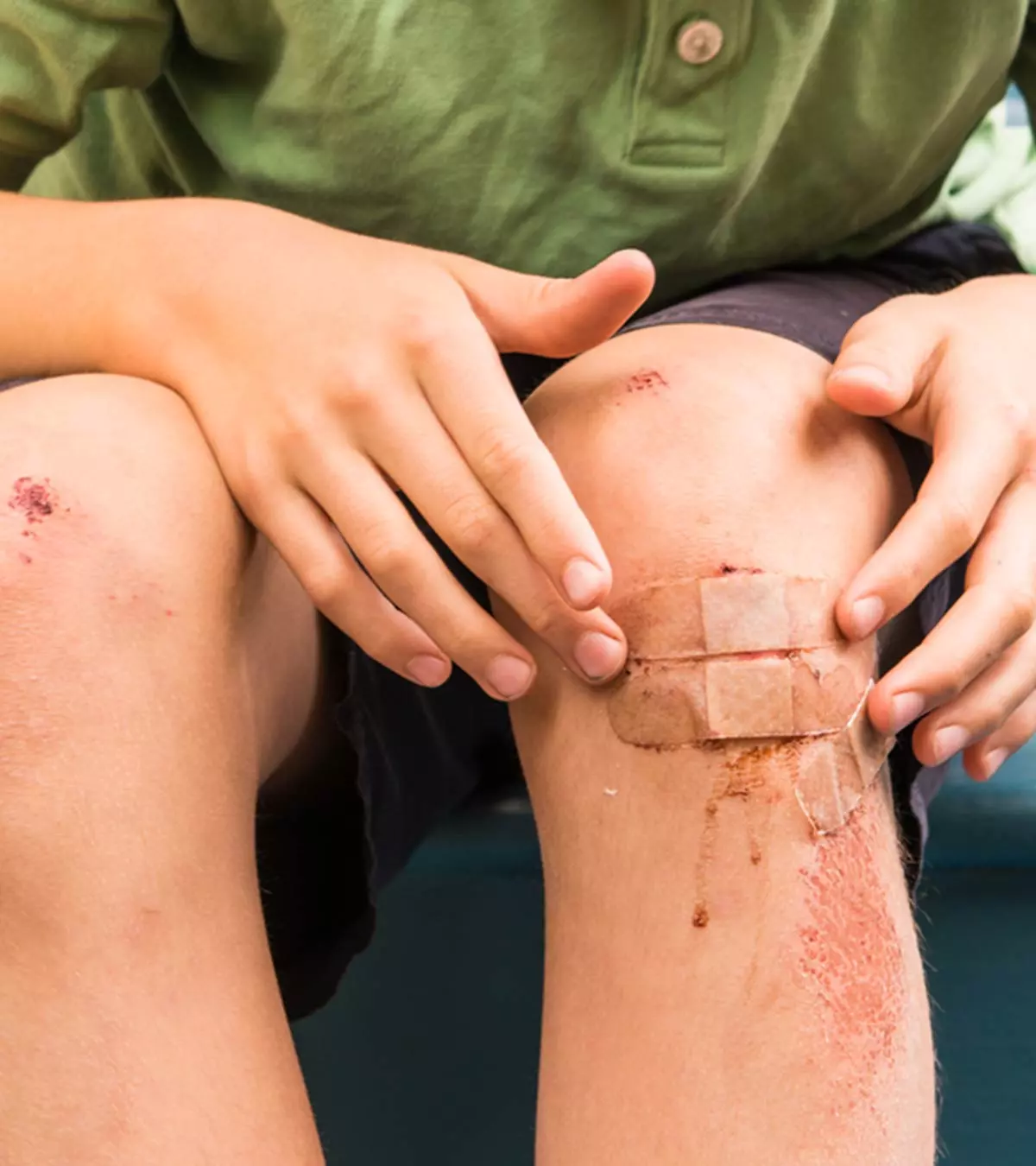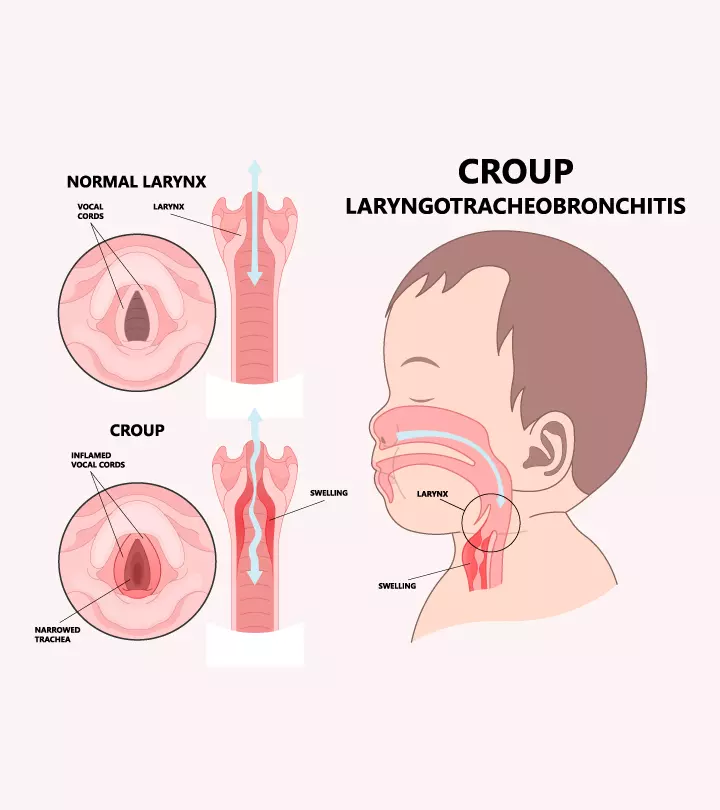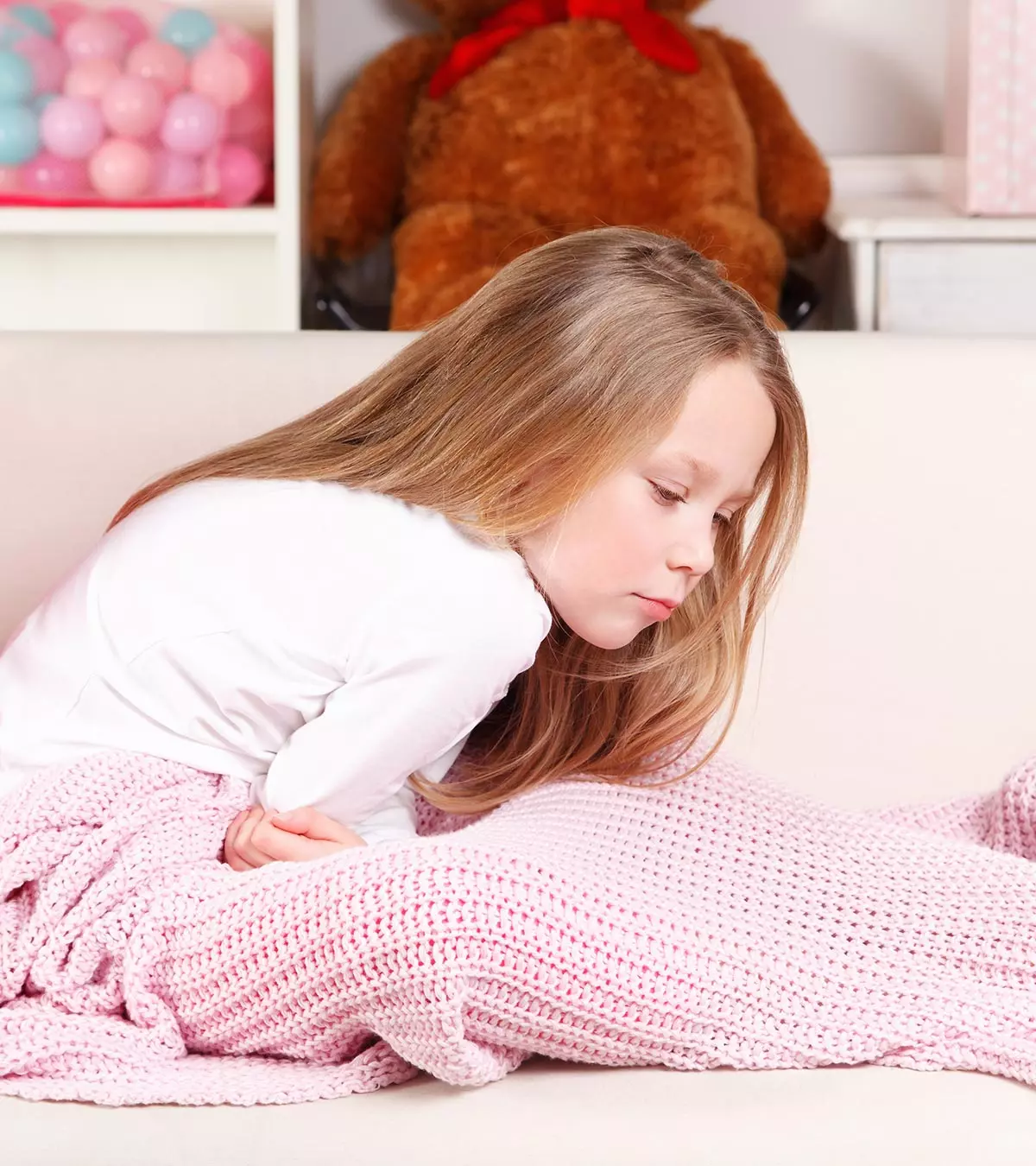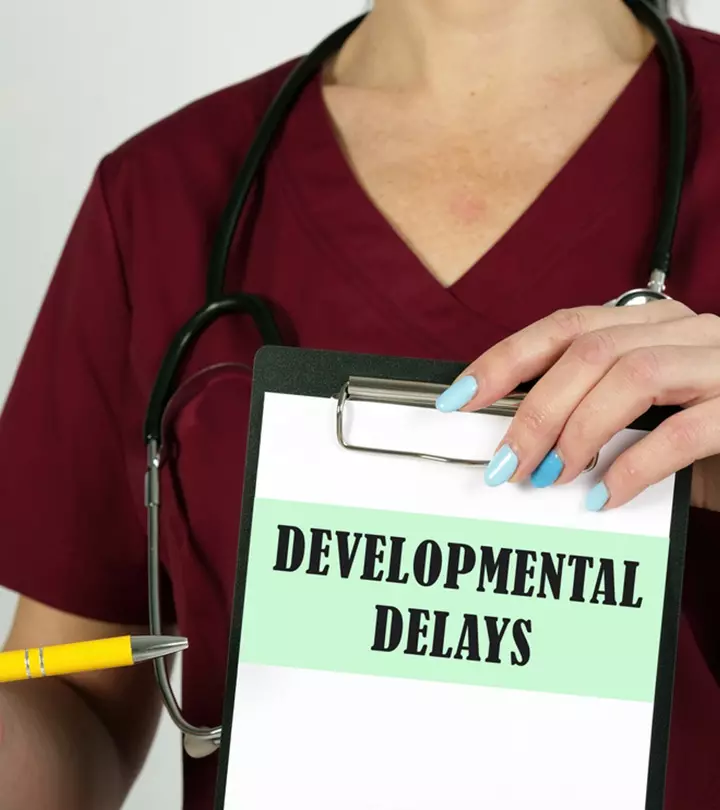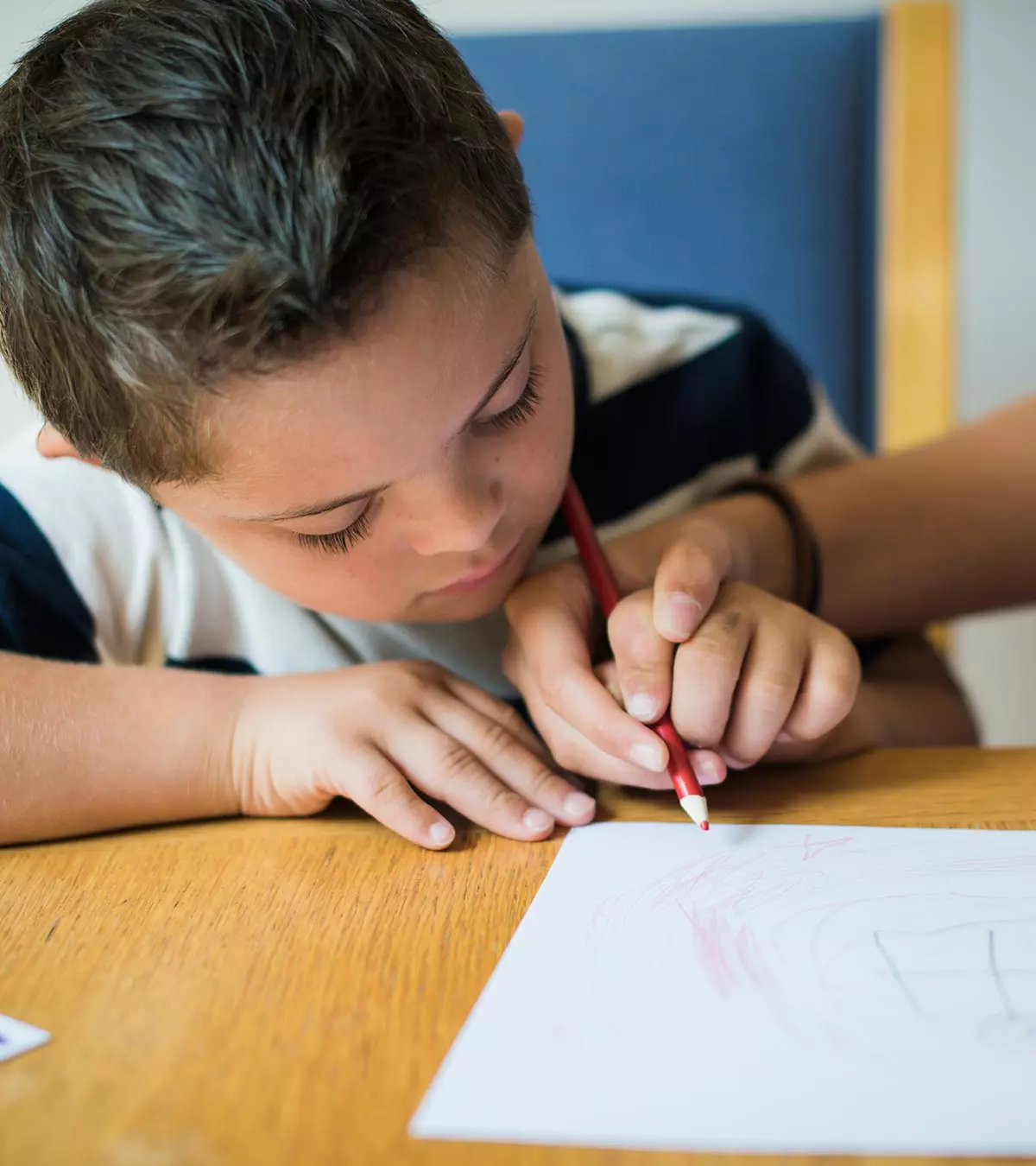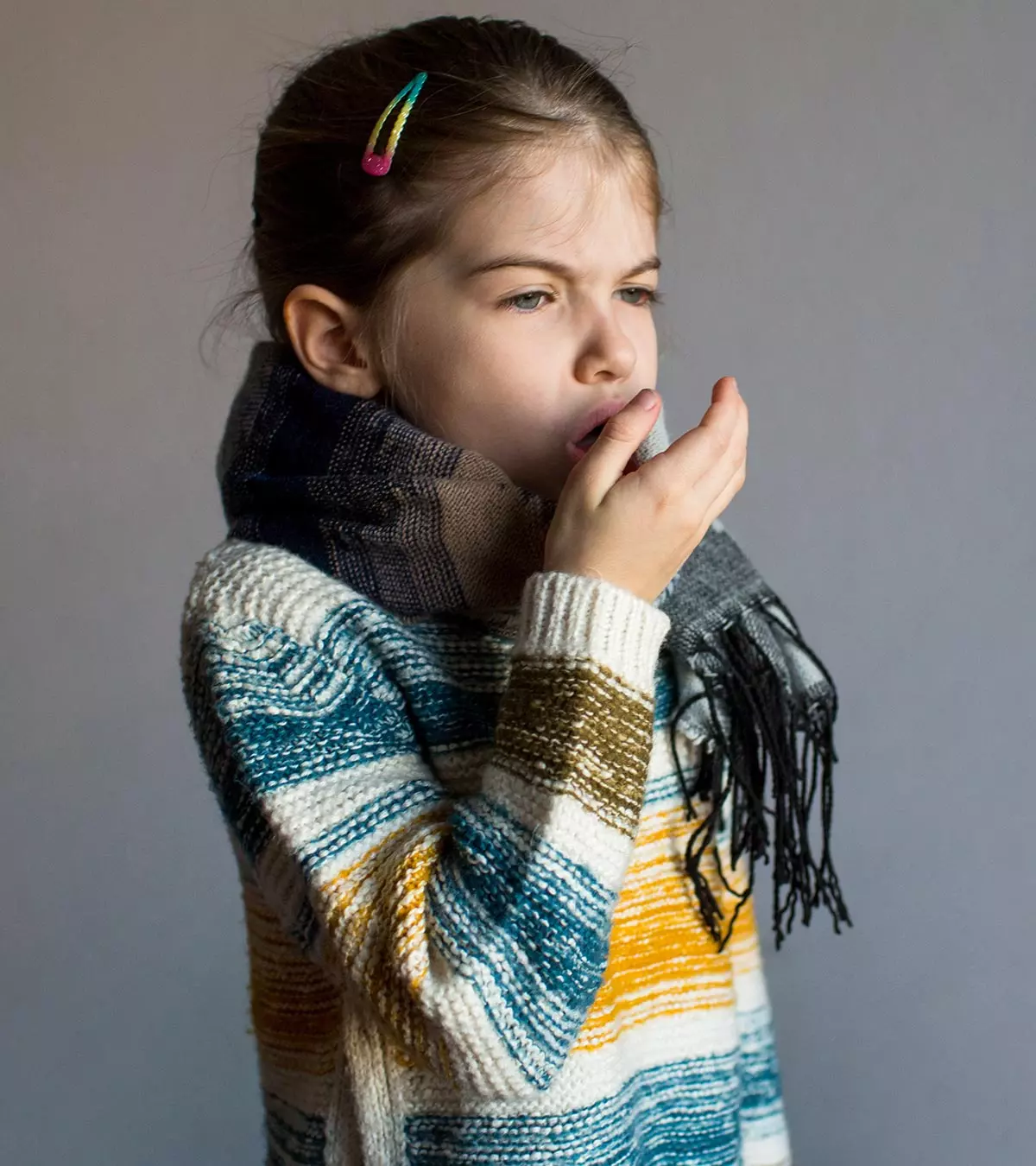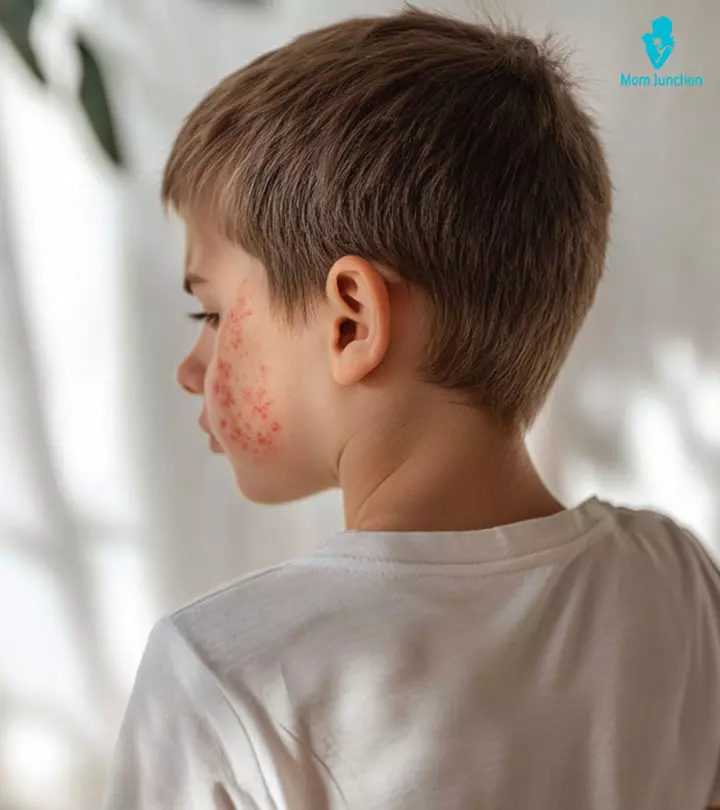
Image: Midjourney/ MomJunction Design Team
Fifth disease in kids is a viral infection caused by human parvovirusiA type of virus that is present in nasal mucus, spit, or saliva and affects only humans. B19. It got its unique name from being the fifth on the list of the most common types of skin rashes in children, with the first four ones being measlesiAn acute viral respiratory disease characterized by cough, high fever, cold, and conjunctivitis. , rubellaiAn acute, contagious, viral infection that causes a spotty rash. , chickenpoxiA highly contagious viral disease characterized by fever, blisters, and itchy rashes. , and roseolaiA contagious disease caused by humans herpesvirus 6, characterized by cold, high fever, and rashes. (1) (2).

The fifth disease rash is also called the “slapped cheek rash” since its first notable manifestation is a bright red rash on the child’s cheeks. The illness is most commonly seen in school-going children and is transmitted usually during the spring and winter seasons (3). The usually mild infection can be treated with simple medications. In this post, we tell you about the fifth disease in children, its cause, symptoms, and treatment.
Key Pointers
- Human parvovirus B19 causes the contagious viral infection known as the fifth disease.
- The disease earned its name for being the fifth most frequent viral rash among children.
- Children aged 4-10 face a higher risk of contracting the disease.
- Symptoms of the fifth disease include fever, headache, fatigue, joint pain, and a rash that spreads from the face to the body.
- Treatment options for the symptoms include antihistamines, fever-reducing medication, and ample fluid intake to prevent dehydration.
Is Fifth Disease Contagious?

The fifth disease can spread among children through direct contact with an infected person or an infected person’s blood. Also, it can spread from touching objects or surfaces contaminated with the saliva and mucus droplets from the nose or mouth of an infected person. However, the fifth disease can be transmitted only before the rash or inflammation appears when other symptoms prevail. Once the viral rash in children develops, it is no longer contagious (3).
Infographic: How To Care For Children With Fifth Disease?
Some thing wrong with infographic shortcode. please verify shortcode syntaxA mother of a little girl talks about her daughter’s experience with the Fifth disease, “As a first-time mom I was introduced to the Fifth disease a few years back when my daughter’s daycare provider mentioned it because her cheeks were really red. ‘Really,’ I thought, ‘she seems okay.’ Later that night, I also noticed a lace-like rash on her upper body. All this prompted me to hop on the internet, and I found out that it was a respiratory infection caused by a virus called parvovirus B19. It is spread like the common cold, so it is good to remember all the golden rules that help keep germs from spreading – Wash your hands, cover your cough (i).”
What Are The Signs And Symptoms Of Fifth Disease In Children?
The fifth disease, also known as Erythema infectiosum, proceeds in stages, and so do the signs, as they are different in all stages (4).
1. First stage: It lasts for one to two weeks, and the child is most contagious during this phase. The child may experience:
- Low-grade fever
- Faint headache
- Fatigue
- Runny or stuffy nose, and sore throat (cold-like symptoms)
- Joint pain or muscle pain with swelling, mostly in older children
2. Second stage:
This stage marks the beginning of the “slapped cheek” phase, which starts about two to three weeks after the onset of the infection. The child is not contagious during this period, and the rash only lasts for five to ten days.
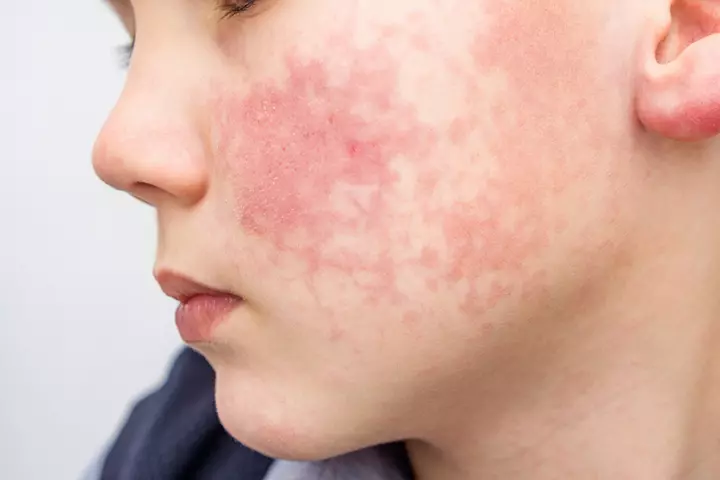
3. Third stage: This stage typically lasts for one to three weeks. Your child may experience the following symptoms:
- Rashes may spread from the face to the arms, thighs, and chest
- Rashes may appear patchy and lace-like
- Itching may occur at times
Note: Certain triggers, such as exercises, sunlight, extreme cold or heat, and stress, may cause the rash to reappear after weeks of its disappearance.
 Quick fact
Quick factWho Is At Risk Of Developing The Fifth Disease?
Children between the ages of four and ten can be at a higher risk than adults since most adults would have been immune from childhood exposure to the virus. In addition, children in closed, crowded gatherings may have a higher chance of getting infected (5).
Research in collaboration with researchers from the Sampson Regional Medical Center and Campbell University has highlighted that around two to ten percent of children under five are diagnosed with Parvovirus B19 infection in developed countries.
What Are The Complications Of Fifth Disease In Children?
Fifth disease, sometimes called slapped cheek syndrome, is a mild illness for healthy children and adults. However, the symptoms can cause severe complications in people with a weakened immune system due to conditions such as an HIV infection, cancer, or organ transplantation (6). Since the parvovirus affects the body’s red blood cells, children with blood cell disorders, such as sickle cell disease, could encounter complications such as chronic anemia. Affected children may require a blood transfusion to manage the complications (2) (7).
 Point to consider
Point to considerHow Is Fifth Disease Diagnosed?

The doctor may examine the rashes and often diagnose the disease from the rash’s appearance. Additionally, blood testing may be carried out to confirm the diagnosis by checking the presence of parvovirus B19 (6). Since the symptoms of this disease can overlap with other viral infections in children, the doctor may also inquire about your child’s medical history and symptom patterns to ensure an accurate diagnosis.
How Is Fifth Disease Treated?

The disease does not have any specific treatments. The healthcare provider may recommend some medicines and home remedies to alleviate the signs and symptoms (8).
- Drinking plenty of fluids
- Prescription for acetaminophen or ibuprofen to reduce the fever
- Prescription for antihistamines for the itchy rash
Some medicines may not be suitable for children under six months of age unless prescribed by the doctor. Do not give aspirin since it may cause severe side effects in some children. Make sure to closely monitor your child’s symptoms and contact the pediatrician if the symptoms worsen or if the child already has a medical condition that could complicate the infection.
Brittni Brown, a mother and enthusiastic blogger, talks about the time her son was diagnosed with the Fifth disease and how they went about the cure. “It all started with a fever… We had been around kids at the Usborne Books and More convention, and I thought my son, Forrest, may have just picked up a small virus, and it would be done and over with after a few days. But it wasn’t. He spiked a fever the next night of 104 degrees, and I instantly worried how high it would get by morning. Thankfully, after several doses of Motrin, the fever finally broke. By the next day, though, he had broken out in a horrible, horrible rash. Apparently, our journey was not over. I knew in my gut he had caught Fifth’s Disease… After the rash appeared on my son, we decided to take him to the pediatrician because we were leaving to go out of town again for a week and a half. The doctor’s office had us enter through the backdoor as a precaution, as the virus is highly contagious. And sure enough, it was Fifth’s… Comfort care was what we were prescribed. It stinks because there is not much you can do about the disease but let it run its course. We gave Motrin round the clock for pain and fever, nursed frequently, and snuggled (ii).”
How To Prevent Fifth Disease In Children?
Since the disease does not have a vaccine or specific treatment, it is better to adopt preventive measures. The problem, of course, is that the disease is most contagious when it presents with non-specific flu-like symptoms in the first stage. An effective way is to maintain personal hygiene. Do not let your child be near an infected person or share common things with them. Some ways for children to prevent the spread of the virus and avoid contracting it are (4):
- Wash hands frequently

Frequently Asked Questions
1. Is hand, foot, and mouth disease the same as the fifth disease?
Although both illnesses have a similar mode of transmission, hand, foot, and mouth disease (HFMD) is caused by a different virus (Coxsackie virus), and the blisters or skin rashes in children are typically seen on hands, feet, and mouth in HFMD (9).
2. Can a child have the fifth disease more than once?
According to the American Academy Of Pediatrics, a child who is exposed to the fifth disease once may not get it again later in life (2).
3. What is the difference between roseola and fifth disease?
Although rashes are a typical occurrence of both diseases, roseola in children may present specific symptoms, including sore throat, rose-pink macular rash, and eyelid swelling (10).
Fifth disease is one of the common viral infections in children with mild symptoms in children with a healthy immune system. You can prevent the infection, but in most cases, it goes away without posing any complications with proper medications and home care.
Illustration: Fifth Disease In Kids: Symptoms Treatment And Prevention
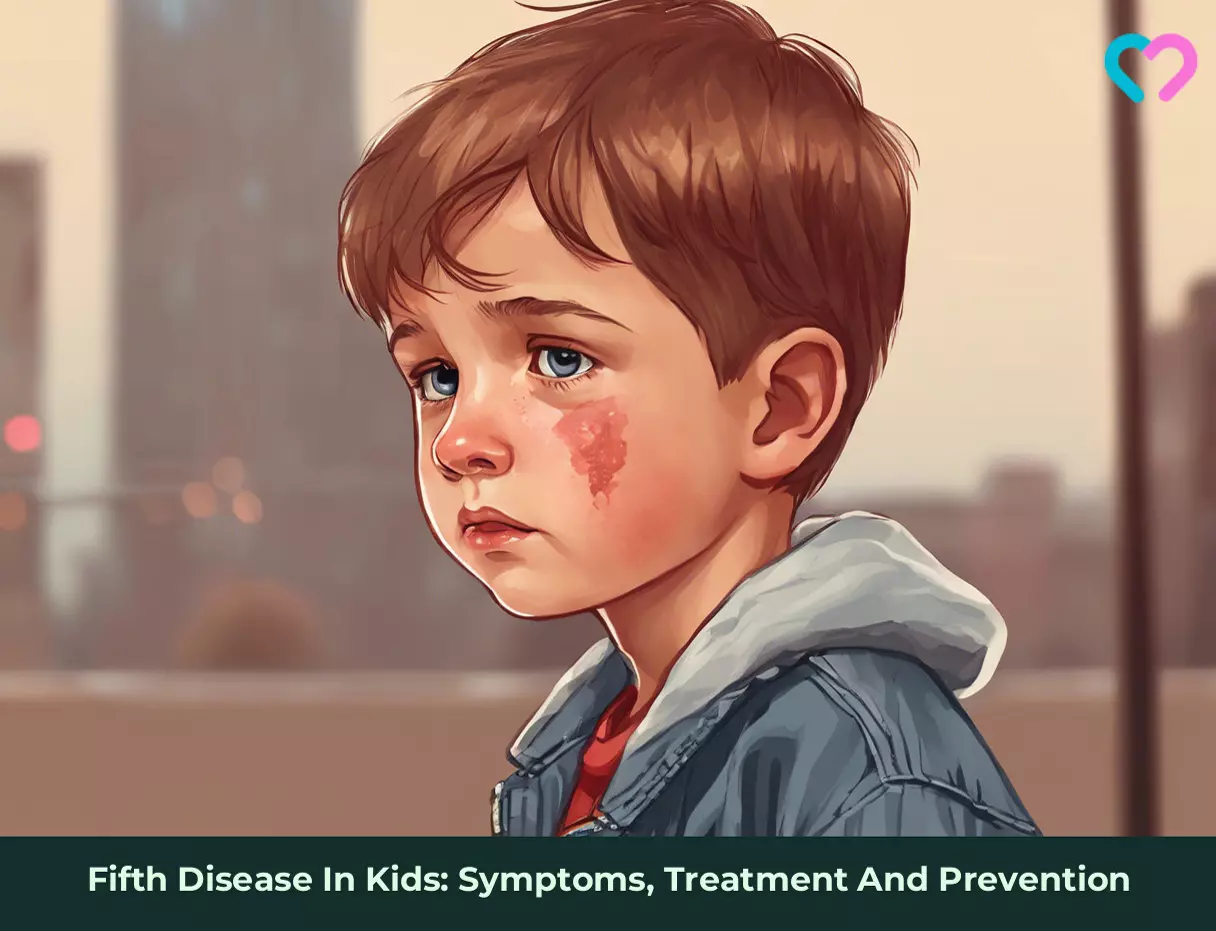
Image: Stable Diffusion/MomJunction Design Team
Personal Experience: Source
MomJunction articles include first-hand experiences to provide you with better insights through real-life narratives. Here are the sources of personal accounts referenced in this article.
i. My child has what? (fifth disease)https://haltonparentsblog.ca/2011/07/12/my-child-has-what-fifth-disease/
ii. Our journey with the Fifth disease.
https://okcmom.com/our-journey-with-fifths-disease/
References
- Fifth Disease.
https://my.clevelandclinic.org/health/diseases/15774-fifth-disease - Fifth Disease (Parvovirus B19).
https://www.healthychildren.org/English/health-issues/conditions/skin/Pages/Fifth-Disease-Parvovirus-B19.aspx - Fifth Disease.
https://www.chop.edu/conditions-diseases/fifth-disease# - Fifth Disease (Erythema Infectiosum).
https://www.nationwidechildrens.org/conditions/fifth-disease - Fifth Disease in Children.
https://www.urmc.rochester.edu/encyclopedia/content.aspx?contenttypeid=90&contentid=P01900 - About Parvovirus B19.
https://www.cdc.gov/parvovirus-b19/about/index.html - Fifth Disease.
https://health.hawaii.gov/docd/files/2013/05/dib_fifthdisease.pdf - Fifth Disease in Children.
https://www.cedars-sinai.org/health-library/diseases-and-conditions—pediatrics/f/fifth-disease-in-children.html - Hand Foot and Mouth Disease (Coxsackie viral infection).
https://www.health.ny.gov/diseases/communicable/hand_foot_mouth/fact_sheet.htm - Roseola.
https://www.nhs.uk/conditions/roseola/
Community Experiences
Join the conversation and become a part of our nurturing community! Share your stories, experiences, and insights to connect with fellow parents.
Read full bio of Dr. Elna Gibson
Read full bio of Aneesha Amonz
Read full bio of Dr. Ritika Shah
Read full bio of Vidya Tadapatri





